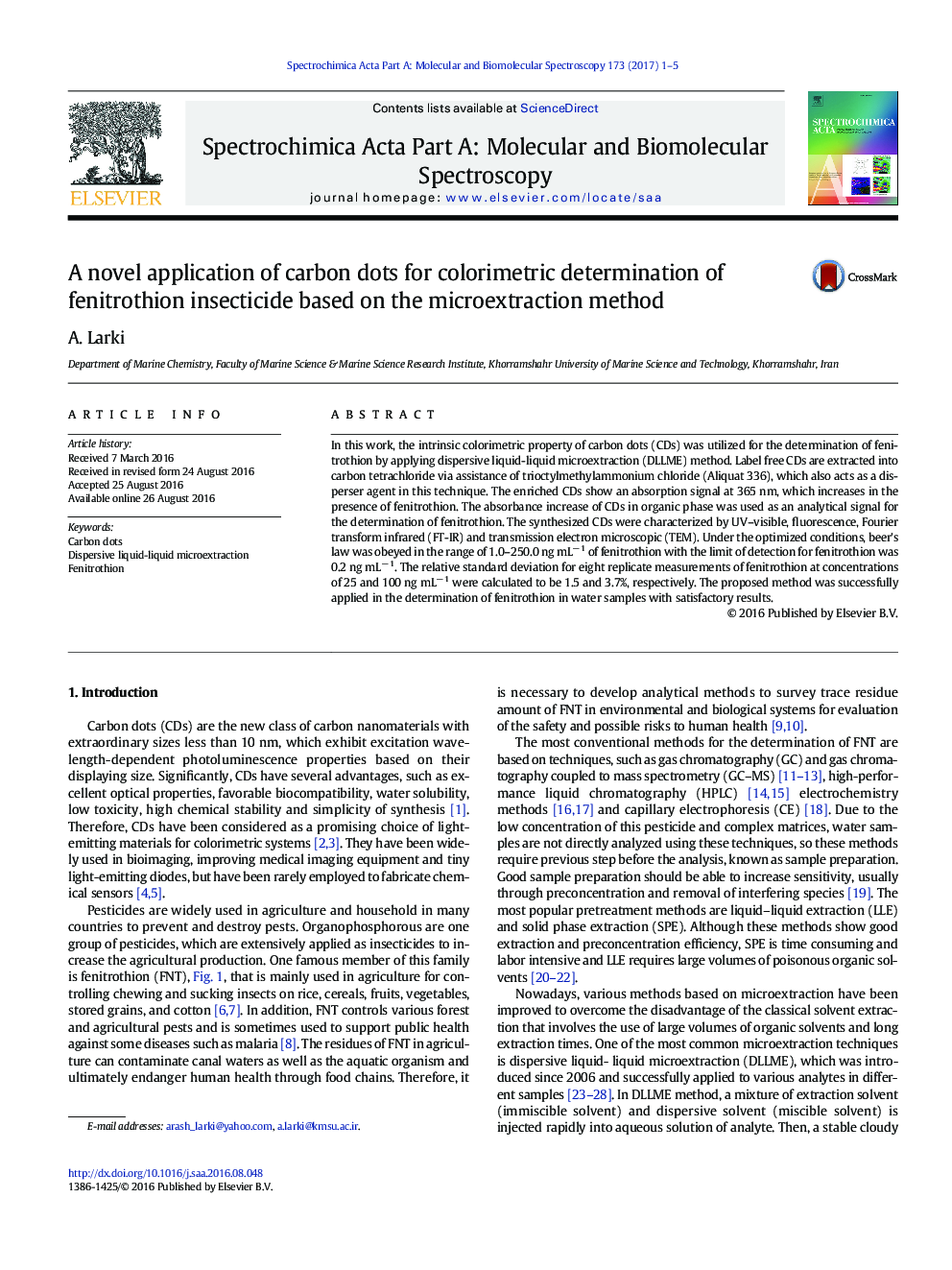| Article ID | Journal | Published Year | Pages | File Type |
|---|---|---|---|---|
| 1229832 | Spectrochimica Acta Part A: Molecular and Biomolecular Spectroscopy | 2017 | 5 Pages |
•First application of dispersive liquid-liquid microextraction of carbon-dots•Preconcentration of carbon-dots by microextraction method•The method was applied to determination of fenitrothion in water samples.•Trioctylmethylammonium chloride (Aliquat 336) was used as disperser agent.•Detection limit is better than other microextraction method based on spectrophotometric detection.
In this work, the intrinsic colorimetric property of carbon dots (CDs) was utilized for the determination of fenitrothion by applying dispersive liquid-liquid microextraction (DLLME) method. Label free CDs are extracted into carbon tetrachloride via assistance of trioctylmethylammonium chloride (Aliquat 336), which also acts as a disperser agent in this technique. The enriched CDs show an absorption signal at 365 nm, which increases in the presence of fenitrothion. The absorbance increase of CDs in organic phase was used as an analytical signal for the determination of fenitrothion. The synthesized CDs were characterized by UV–visible, fluorescence, Fourier transform infrared (FT-IR) and transmission electron microscopic (TEM). Under the optimized conditions, beer's law was obeyed in the range of 1.0–250.0 ng mL− 1 of fenitrothion with the limit of detection for fenitrothion was 0.2 ng mL− 1. The relative standard deviation for eight replicate measurements of fenitrothion at concentrations of 25 and 100 ng mL− 1 were calculated to be 1.5 and 3.7%, respectively. The proposed method was successfully applied in the determination of fenitrothion in water samples with satisfactory results.
Graphical abstractFigure optionsDownload full-size imageDownload as PowerPoint slide
